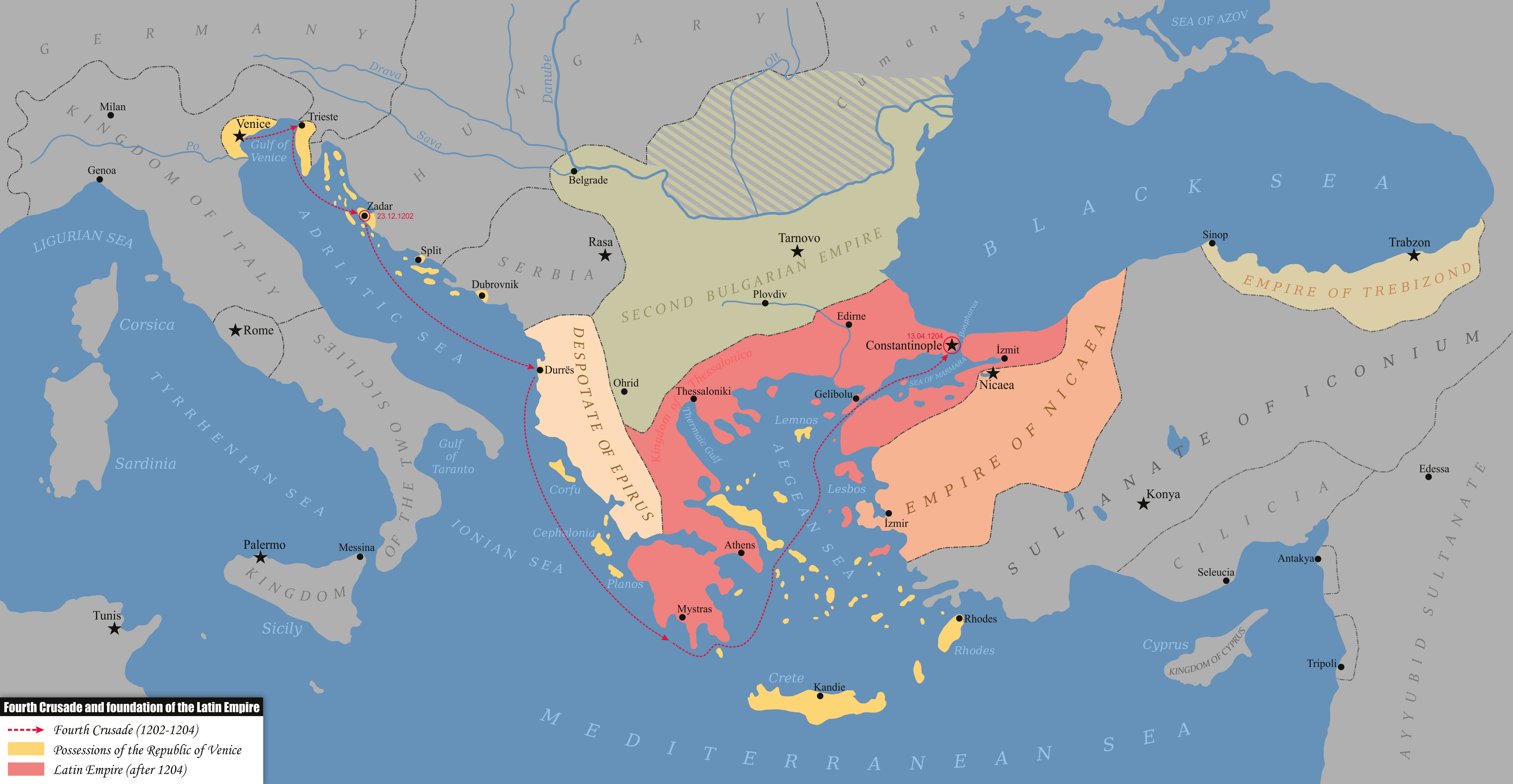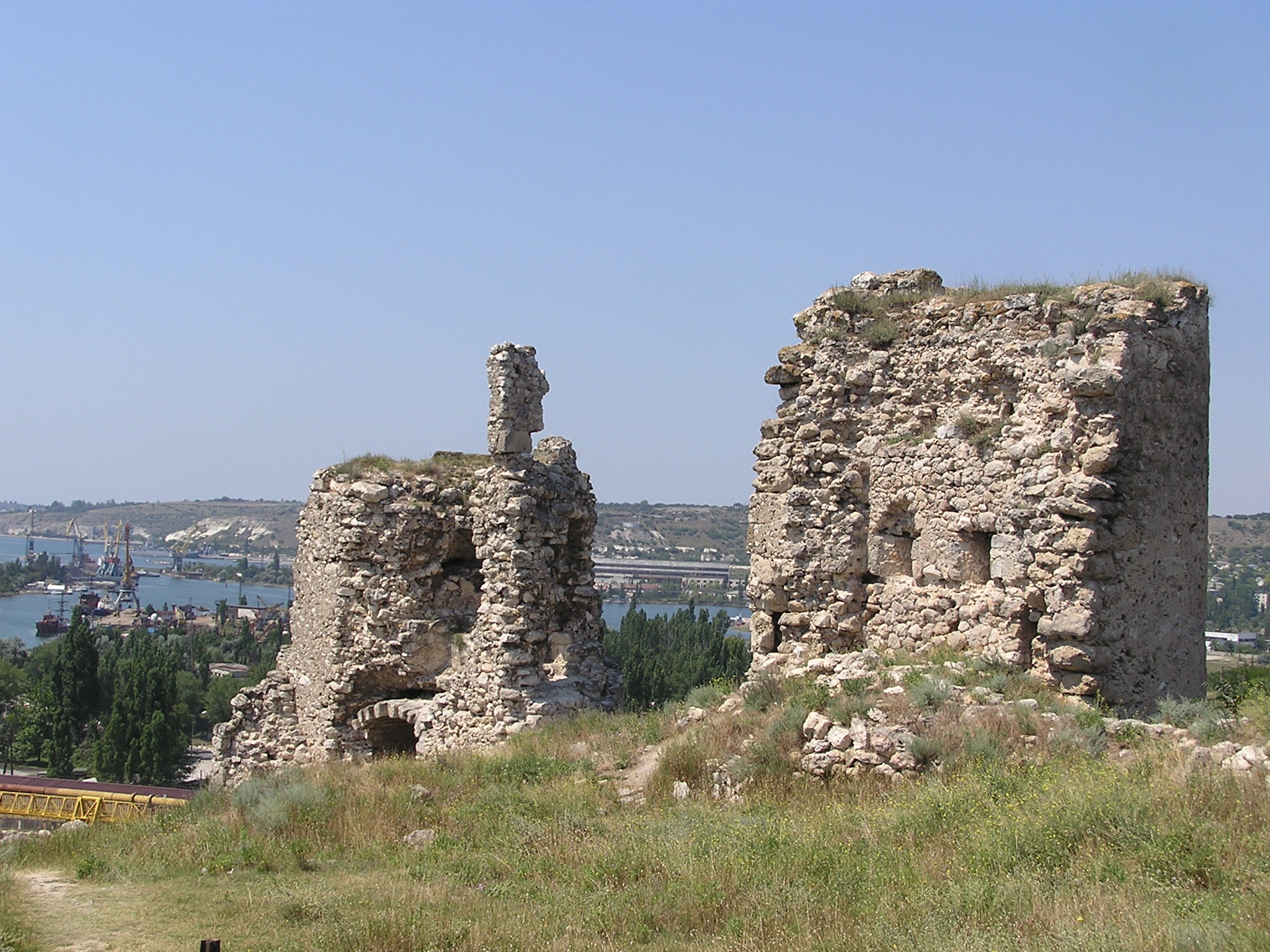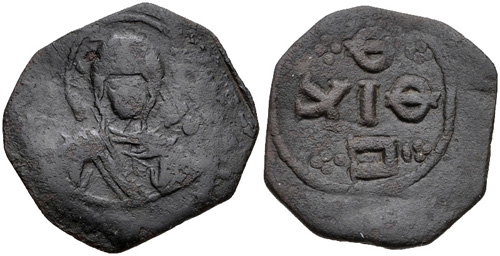|
Perateia
Perateia ( el, Περάτεια, "place beyond he sea, cf. ''peraia'') was the overseas territory of the Empire of Trebizond, comprising the Crimean cities of Cherson, Kerch and their hinterlands. The territory was probably administered during Byzantine rule from Trebizond before the Comneni established a separate empire a few weeks before the Crusader sack of Constantinople in 1204. Trapezuntine control over Perateia had been weak almost from the beginning, subjected to pressure from the Genoese and Tatars by the time of Alexius I's death in 1222. The year after, the Seljuk Turks raided Perateia's coasts, and built the fortress of Sudak to try and channel the Crimean trade from Trebizond into Seljuk-held Sinope. After that, the area was administered by the Gabras family, Trapezuntine magnates who later established the principality of Theodoro The Principality of Theodoro ( el, Αὐθεντία πόλεως Θεοδωροῦς καὶ παραθαλασσίας), also know ... [...More Info...] [...Related Items...] OR: [Wikipedia] [Google] [Baidu] |
Empire Of Trebizond
The Empire of Trebizond, or Trapezuntine Empire, was a monarchy and one of three successor rump states of the Byzantine Empire, along with the Despotate of the Morea and the Principality of Theodoro, that flourished during the 13th through to the 15th century, consisting of the far northeastern corner of Anatolia (the Pontus) and the southern Crimea. The empire was formed in 1204 with the help of the Georgian queen Tamar after the Georgian expedition in Chaldia and Paphlagonia, commanded by Alexios Komnenos a few weeks before the sack of Constantinople. Alexios later declared himself Emperor and established himself in Trebizond (modern day Trabzon, Turkey). Alexios and David Komnenos, grandsons and last male descendants of deposed Emperor Andronikos I Komnenos, pressed their claims as "Roman emperors" against Byzantine Emperor Alexios V Doukas. The later Byzantine emperors, as well as Byzantine authors, such as George Pachymeres, Nicephorus Gregoras and to some ext ... [...More Info...] [...Related Items...] OR: [Wikipedia] [Google] [Baidu] |
Principality Of Theodoro
The Principality of Theodoro ( el, Αὐθεντία πόλεως Θεοδωροῦς καὶ παραθαλασσίας), also known as Gothia ( el, Γοτθία) or the Principality of Theodoro-Mangup, was a Greek principality in the southern part of Crimea, specifically on the foothills of the Crimean Mountains. It represented one of the final rump states of the Eastern Roman Empire and the last territorial vestige of the Crimean Goths until its conquest by the Ottoman Empire by the Ottoman Albanian Gedik Ahmed Pasha in 1475. Its capital was Doros, also sometimes called Theodoro and now known as Mangup. The state was closely allied with the Empire of Trebizond. History In the late 12th century, the Crimean peninsula had seceded from the Byzantine Empire, but soon after the sack of Constantinople in 1204 parts of it were included in the Trapezuntine '' Gazarian Perateia''. This dependence was never very strong and was eventually replaced by the invading Mongols, who in 12 ... [...More Info...] [...Related Items...] OR: [Wikipedia] [Google] [Baidu] |
Peraia
Peraia, and Peraea or Peræa (from grc, ἡ περαία, ''hē peraia'', "land across") in Classical Antiquity referred to "a community's territory lying 'opposite', predominantly (but not exclusively) a mainland possession of an island state" according to Karl-Wilhelm Welwei. Notable examples include: * the ''peraia'' of Mytilene, which already in the 8th and 7th centuries BC comprised a number of coastal towns from the mouth of the Hellespont to the southern end of the Bay of Adramyttium. It lost this territory to Athens after its failed rebellion in 427 BC against Athenian domination, but appears to have re-acquired a ''peraia'' by the mid-4th century BC. * the Rhodian Peraia, the possessions of Rhodes in southwestern Asia Minor between the 5th century BC and the 1st century BC. Originally comprising parts of coastal Caria, after the Treaty of Apamea this briefly expanded to cover most of Caria and Lycia. * the ''peraia'' of Samos, which established control in ca. 700 BC ov ... [...More Info...] [...Related Items...] OR: [Wikipedia] [Google] [Baidu] |
Byzantine Empire
The Byzantine Empire, also referred to as the Eastern Roman Empire or Byzantium, was the continuation of the Roman Empire primarily in its eastern provinces during Late Antiquity and the Middle Ages, when its capital city was Constantinople. It survived the fragmentation and fall of the Western Roman Empire in the 5th century AD and continued to exist for an additional thousand years until the fall of Constantinople to the Ottoman Empire in 1453. During most of its existence, the empire remained the most powerful economic, cultural, and military force in Europe. The terms "Byzantine Empire" and "Eastern Roman Empire" were coined after the end of the realm; its citizens continued to refer to their empire as the Roman Empire, and to themselves as Romans—a term which Greeks continued to use for themselves into Ottoman times. Although the Roman state continued and its traditions were maintained, modern historians prefer to differentiate the Byzantine Empire from Ancient ... [...More Info...] [...Related Items...] OR: [Wikipedia] [Google] [Baidu] |
Alexius I Of Trebizond
Alexios I Megas Komnenos ( el, Αλέξιος Κομνηνός; c. 1182 – 1 February 1222) or Alexius I Megas Comnenus was, with his brother David, the founder of the Empire of Trebizond and its ruler from 1204 until his death in 1222. The two brothers were the only male descendants of the Byzantine Emperor Andronikos I, who had been dethroned and killed in 1185, and thus claimed to represent the legitimate government of the Empire following the conquest of Constantinople by the Fourth Crusade in 1204. Although his rivals governing the Nicaean Empire succeeded in becoming the de facto successors, and rendered his dynastic claims to the imperial throne moot, Alexios' descendants continued to emphasize both their heritage and connection to the Komnenian dynasty by later referring to themselves as ''Megas Komnenos'' ("grand Komnenos"). While his brother David conquered a number of Byzantine provinces in northwestern Anatolia, Alexios defended his capital Trebizond from an unsu ... [...More Info...] [...Related Items...] OR: [Wikipedia] [Google] [Baidu] |
Republic Of Genoa
The Republic of Genoa ( lij, Repúbrica de Zêna ; it, Repubblica di Genova; la, Res Publica Ianuensis) was a medieval and early modern maritime republic from the 11th century to 1797 in Liguria on the northwestern Italian coast. During the Late Middle Ages, it was a major commercial power in both the Mediterranean Sea and the Black Sea. Between the 16th and 17th centuries it was one of the major financial centers in Europe. Throughout its history, the Genoese Republic established numerous colonies throughout the Mediterranean and the Black Sea, including Corsica from 1347 to 1768, Monaco, Southern Crimea from 1266 to 1475 and the islands of Lesbos and Chios from the 14th century to 1462 and 1566 respectively. With the arrival of the early modern period, the Republic had lost many of its colonies, and had to shift its interests and focus on banking. This decision would prove successful for Genoa, which remained as one of the hubs of capitalism, with highly developed ban ... [...More Info...] [...Related Items...] OR: [Wikipedia] [Google] [Baidu] |
Gabras
Gabras or Gavras ( el, , tr, ) feminine form Gabraina (Γάβραινα), is the name of an important Byzantine aristocratic family which became especially prominent in the late 11th and early 12th centuries as the semi-independent and quasi-hereditary rulers of Chaldia. The Gabrades are attested for the first time in the late 10th century, when Constantine Gabras participated in the revolt of Bardas Skleros. The general Theodore Gabras captured Trebizond and ruled it and the theme of Chaldia as a virtually autonomous state (ca. 1081–1098). He was celebrated for his martial exploits, and was later venerated as a saint in the region. His son, Constantine Gabras, also became governor of Chaldia (ca. 1119–1140) and ended up ruling it as a quasi-independent prince. Several members of the family entered service with the Seljuk Turks in the 12th and 13th centuries, and in the 14th century, several Gabrades are attested in administrative positions in Byzantium, most notably th ... [...More Info...] [...Related Items...] OR: [Wikipedia] [Google] [Baidu] |
Sinop, Turkey
Sinop, historically known as Sinope (; gr, Σινώπη, Sinōpē), is a city on the isthmus of İnce Burun (İnceburun, Cape Ince), near Cape Sinope (Sinop Burnu, Boztepe Cape, Boztepe Burnu) which is situated on the northernmost edge of the Turkish side of the Black Sea coast, in the ancient region of Paphlagonia, in modern-day northern Turkey. The city serves as the capital of Sinop Province. History Over a period of approximately 2,500 years, Sinope has at various times been settled by Colchians, Greeks (in the late 7th, late 5th, and 4th–3rd centuries BC), by Romans in the mid-1st century BC, and by Turkic people beginning in the 12th century. In the 19th and 20th centuries it was also settled by the '' muhacir'' who immigrated from the Balkans and Caucasus. Evidence for Hittite Kingdom settlement along the Black Sea's southern shore remains murky. Researchers in the 1940s and 50s debated whether the "Great Sea", mentioned on the Boghazkoy tablets describing war b ... [...More Info...] [...Related Items...] OR: [Wikipedia] [Google] [Baidu] |
Sudak
Sudak ( Ukrainian & Russian: Судак; crh, Sudaq; gr, Σουγδαία; sometimes spelled Sudac or Sudagh) is a town, multiple former Eastern Orthodox bishopric and double Latin Catholic titular see. It is of regional significance in Crimea, a territory recognized by most countries as part of Ukraine but annexed by Russia as the Republic of Crimea. Sudak serves as the administrative center of Sudak Municipality, one of the regions Crimea is divided into. It is situated to the west of Feodosia (the nearest railway station) and to the east of Simferopol, the republic's capital. Population: A city of antiquity, today it is a popular resort, best known for its Genoese fortress, the best preserved on the northern shore of the Black Sea. History Foundation and early Middle Ages The date and circumstances of the city's foundation are uncertain. The first written reference to the city dates to the 7th century (in the ''Ravenna Cosmography''), but later local tradition places ... [...More Info...] [...Related Items...] OR: [Wikipedia] [Google] [Baidu] |
Seljuk Turks
The Seljuk dynasty, or Seljukids ( ; fa, سلجوقیان ''Saljuqian'', alternatively spelled as Seljuqs or Saljuqs), also known as Seljuk Turks, Seljuk Turkomans "The defeat in August 1071 of the Byzantine emperor Romanos Diogenes by the Turkomans at the battle of Malazgirt (Manzikert) is taken as a turning point in the history of Anatolia and the Byzantine Empire. or the Saljuqids, was an Oghuz Turkic, Sunni Muslim dynasty that gradually became Persianate and contributed to the Turco-Persian tradition in the medieval Middle East and Central Asia. The Seljuks established the Seljuk Empire (1037-1194), the Sultanate of Kermân (1041-1186) and the Sultanate of Rum (1074-1308), which at their heights stretched from Iran to Anatolia, and were the prime targets of the First Crusade. Early history The Seljuks originated from the Kinik branch of the Oghuz Turks, who in the 8th century lived on the periphery of the Muslim world, north of the Caspian Sea and Aral Sea in their ... [...More Info...] [...Related Items...] OR: [Wikipedia] [Google] [Baidu] |
Tatar
The Tatars ()Tatar in the Collins English Dictionary is an umbrella term for different ethnic groups bearing the name "Tatar". Initially, the ethnonym ''Tatar'' possibly referred to the Tatar confederation. That confederation was eventually incorporated into the when unified the various s ... [...More Info...] [...Related Items...] OR: [Wikipedia] [Google] [Baidu] |
Constantinople
la, Constantinopolis ota, قسطنطينيه , alternate_name = Byzantion (earlier Greek name), Nova Roma ("New Rome"), Miklagard/Miklagarth ( Old Norse), Tsargrad ( Slavic), Qustantiniya (Arabic), Basileuousa ("Queen of Cities"), Megalopolis ("the Great City"), Πόλις ("the City"), Kostantiniyye or Konstantinopolis (Turkish) , image = Byzantine Constantinople-en.png , alt = , caption = Map of Constantinople in the Byzantine period, corresponding to the modern-day Fatih district of Istanbul , map_type = Istanbul#Turkey Marmara#Turkey , map_alt = A map of Byzantine Istanbul. , map_size = 275 , map_caption = Constantinople was founded on the former site of the Greek colony of Byzantion, which today is known as Istanbul in Turkey. , coordinates = , location = Fatih, İstanbul, Turkey , region = Marmara Region , type = Imperial city , part_of = , length = , width ... [...More Info...] [...Related Items...] OR: [Wikipedia] [Google] [Baidu] |








